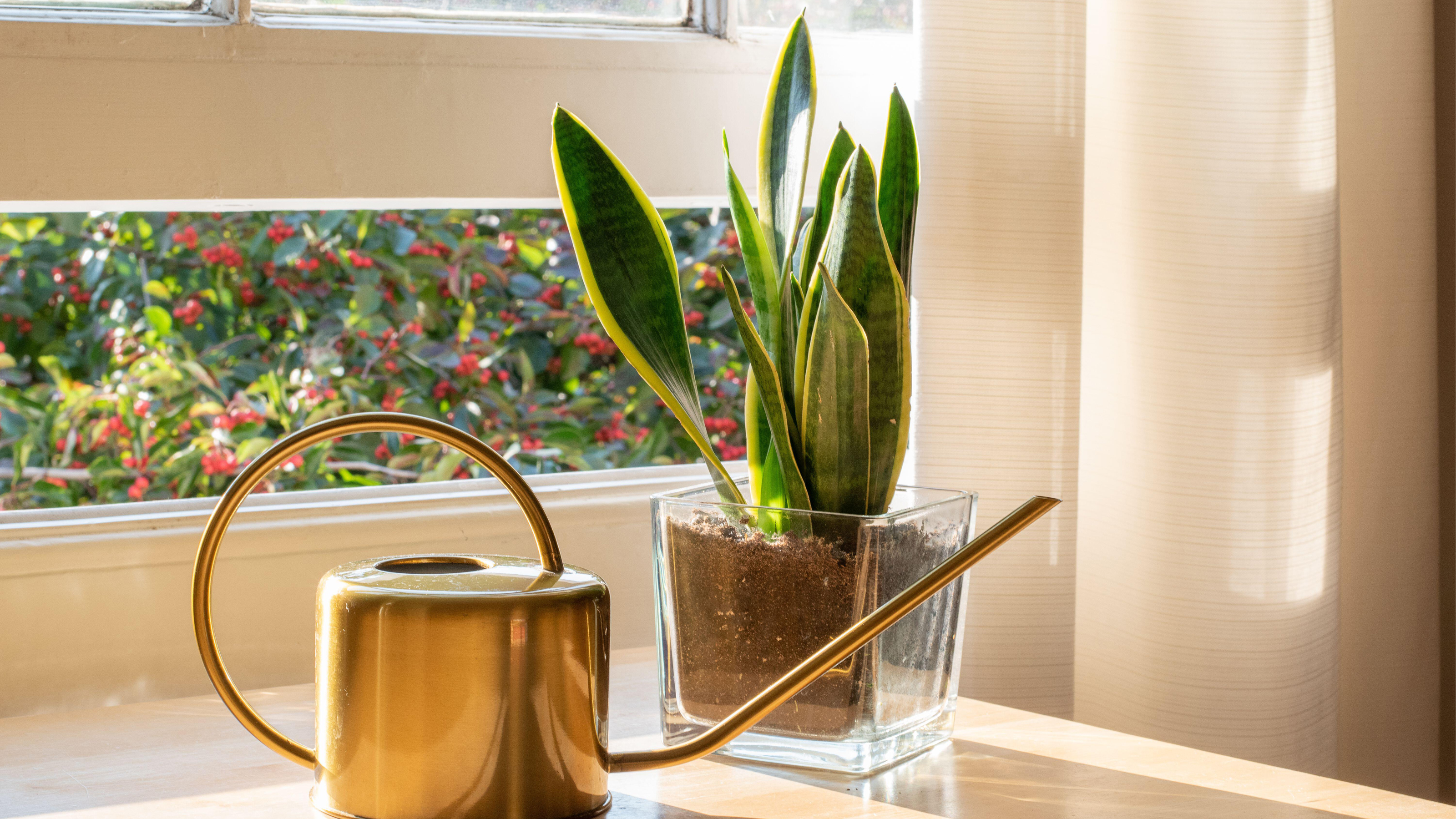Houseplant clinic: why is my snake plant falling over?
Want to know 'why is my snake plant falling over'? Nurse your sansevieria back to health with this expert advice

'Why is my snake plant falling over?' A plant that is flopping or falling over is an alarming sight – but, as in most cases of houseplant ailments, it's probably not as bad as it seems. Sansevierias are generally tough plants, which is why they're often picked by beginner indoor gardeners. However, they do have a small secret that which, once you've discovered it, will help you keep these plants in good health.
One of the best indoor plants for their versatility and resilience, snake plants can begin to flop or even fall over if you don't look after them correctly. Here's what you need to know, according to plant experts.

The one thing that many people don't know about snake plants or sansevierias when they first get them is that these plants are, in fact, succulents. Succulents aren't like other plants, and very different in their requirements from your typical rainforest plant that's grown indoors. Pol Bishop, a gardening expert for Fantastic Gardeners, explains that 'like all succulent plants, they store water in their leaves, which is why they flourish in dry, rocky environments. Snake plants don’t handle wet feet well and will most definitely suffer from root rot if overwatered or if their soil is poorly drained.'
So, the number one reason your snake plant has floppy leaves is because it's soggy. Jo Lambell, founder and plant expert at Beards & Daisies, confirms that 'overwatering the snake plant can cause it to fall over or appear flopped over.' Jo warns that 'leaving the soil saturated' will leave your snake plant 'unable to breathe. As a result, the roots rot and become thick and mushy – and this is when you’ll see the snake plant wilt, droop and even fall over.'

What should I do if I've overwatered my snake plant?
Don't panic! Jo is certain that 'if you suspect you’ve overwatered this plant, it can be saved!' First, 'you’ll need to inspect the roots – if there are more white roots than black ones, this is a good sign. Black roots are a sign of rot.' Once you've inspected the roots and trimmed off any diseased ones, 'carefully take the plant out of its current pot, holding it at its base, and repot with fresh soil.'
Our guide on how to repot a plant has lots of tips to help you with this too.
Other reasons a snake plant is falling over
Overwatering is not the only reason for a floppy snake plant. Pol says that 'another possible reason for the issue is placing the plant in a dark place for a long period of time. Even though snake plants are durable and grow well while not being exposed to direct sunlight, extended absence from bright sunlight or exposure to intense direct light will cause the plant’s leaves to fall over.' In other words, too much or too little light is not good for this plant – like most houseplants it prefers bright indirect light.
Finally, 'if watering and sunlight issues are absent, the problem is most likely caused by improper repotting.' Snake plants like being a little constrained, so 'placing the snake plant in a bigger pot than it needs or repotting more frequently than 3 - 5 years can lead to rotting roots.'
Sansevieria is happiest when you mostly leave it alone, in a nice, bright spot in your indoor garden, and don't overwater.
Anna writes about interior design and gardening. Her work has appeared in Homes & Gardens, Livingetc, and many other publications. She is an experienced outdoor and indoor gardener and has a passion for growing roses and Japanese maples in her outside space.
